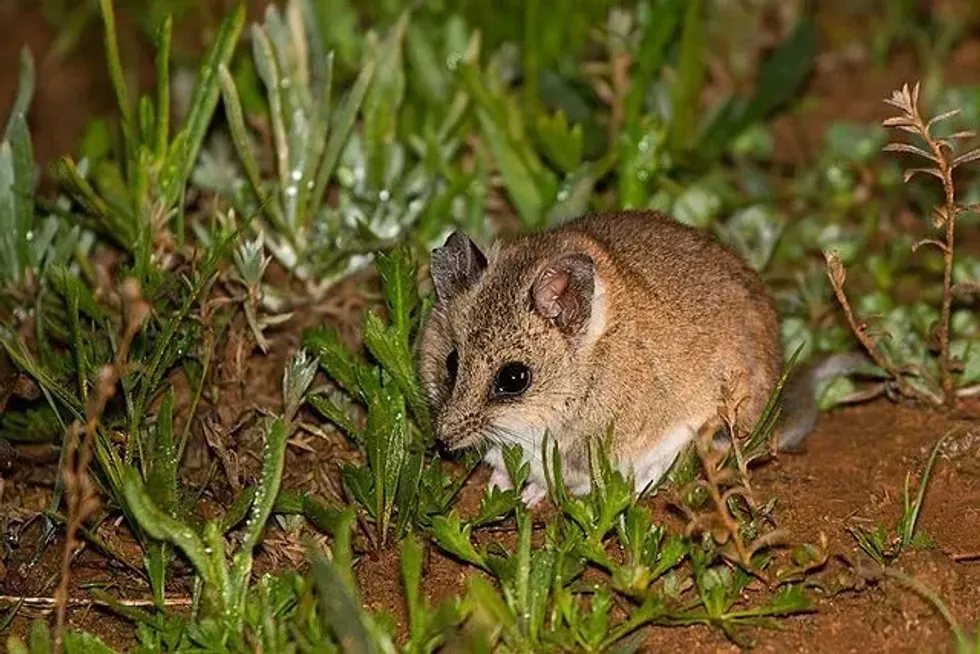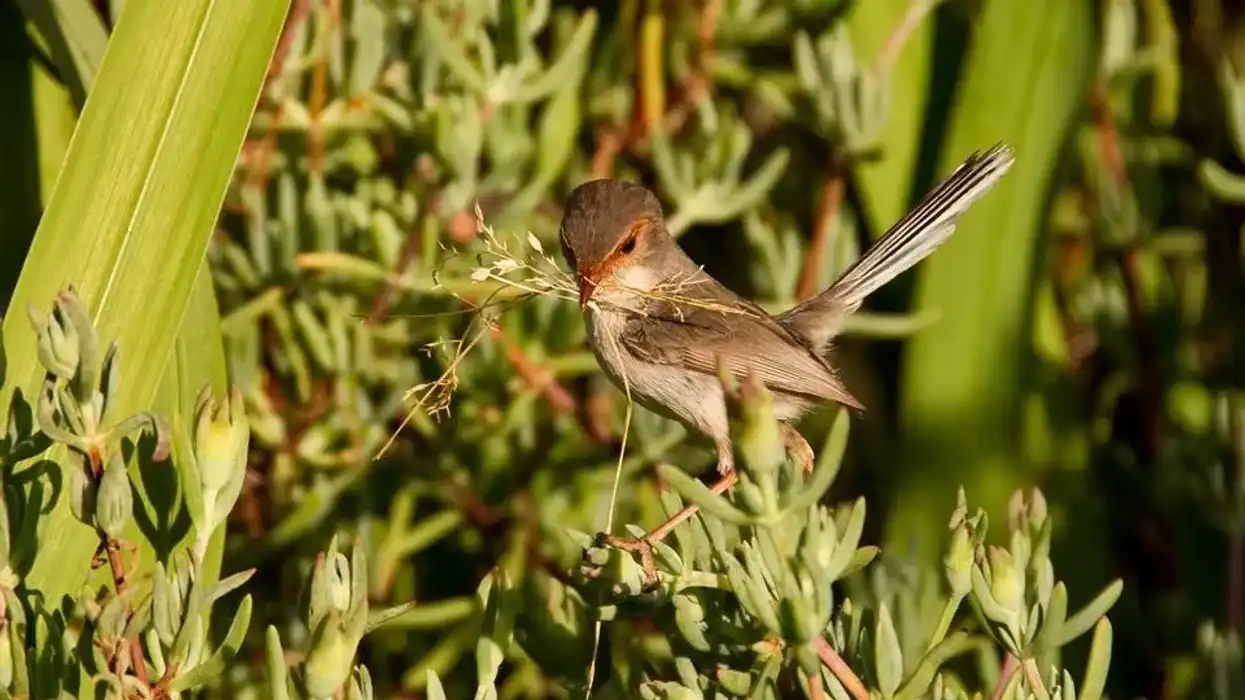All species of the Sminthopsis genus are referred to as a dunnart. The white-footed dunnart (Sminthopsis leucopus) is one such dunnart that belongs to the family of a dozen of marsupial rats that occur in the mainland of Australia and Tasmania.
They strongly resemble the common dunnart species in terms of appearance.
These mice-like marsupial rats are rarely observed in their habitats, perhaps they are the least known mammals among all the species of dunnart. White-footed dunnarts are absent in lowland areas and they occur at elevations ranging above 3280 ft (1000 m).
Dunnarts are the most widespread throughout their range in Tasmania. Since they are observed rarely in their habitat, there is a high chance that the estimated Tasmanian population might vary from the actual population.
The distribution of these dunnarts has also extended up to the coastal areas of New South Wales, Queensland, and Victoria. The absence of evidence regarding population fluctuations or where there is a declining population suggests that these dunnarts are not threatened globally.
To know more about these mammals, keep on reading these amazing facts. Keep reading to learn more about this cute mammal, or learn more about some other animals like the marsupial mole and the oak titmouse.
White-Footed Dunnart Interesting Facts
What type of animal is a white-footed dunnart?
A white-footed dunnart (Sminthopsis leucopus) is a type of marsupial dunnart.
What class of animal does a white-footed dunnart belong to?
The white-footed dunnart (Sminthopsis leucopus) of the Dasyuromorphia order and the Dasyuridae family belongs to the class of mammals or Mammalia along with all warm-blooded animals.
How many white-footed dunnarts are there in the world?
The total population of white-footed dunnarts in Australia is expected to be fewer than 10,000 individuals. The number presumably ranges between 8,000-10,000 individuals.
New South Wales has the lowest number of dunnarts, less than 1000 individuals are suspected to populate the highlands of New South Wales. Up to 2000 individuals inhabit Victoria while fewer than 5000 dunnarts are found in Tasmania. A limited subpopulation with few individuals is also found in Queensland.
Although the population of white-footed dunnarts is not very large, they follow a stable population trend. Therefore, they are not regarded as endangered animals.
Where does a white-footed dunnart live?
White-footed dunnarts are distributed throughout Tasmania and southeast mainland Australia. The distribution of some discrete subpopulations is also found along the southern coast of New South Wales and southern Victoria. It has also been recorded in few numbers in the humid tropical forests of north Queensland.
What is a white-footed dunnart's habitat?
The white-footed dunnart (Sminthopsis leucopus) can adapt to a wide range of habitats across its distribution. They are found in woodlands, rainforests, wet heath, and sedge land.
This species also seems to favor agricultural habitat vegetation communities. In Victoria, these dunnarts inhabit dense shrubs while in New South Wales they prefer coastal habitat consisting of scrubland, woodland, and dune grassland.
Who do white-footed dunnarts live with?
The white-footed dunnart lives by forming large territories. Female white-footed dunnarts live by occupying a relatively small territory than the males.
How long does a white-footed dunnart live?
The lifespan of the dunnart species differs from each other. The males die earlier than females, shortly after they breed. They can live for few months in the wild.
How do they reproduce?
The white-footed dunnart reproduces throughout the entire summer season and the litter is born between September and October. This species of dunnarts attains sexual maturity after turning four to five months old.
The male dunnart dies within a short span after breeding like all other semelparous creatures. As a result, only female white-footed dunnarts have the responsibility of nursing the young ones.
After breedingm up to 10 offspring are born in a single litter. The joeys come out from the mother's pouch after they turn eight weeks old and disperse into the wild after a month.
What is their conservation status?
In spite of having a small population and a small range, the white-footed dunnart is classified as a species of Least Concern in the IUCN Red List. These species are endemic to the mainland of Australia and Tasmania.
Since this species is widespread throughout its endemic range, they are considered to be one a Least Concern species. Their population is not affected by habitat modifications and is also able to adapt to a wide variety of habitats.
White-Footed Dunnart Fun Facts
What do white-footed dunnarts look like?
The white-footed dunnart is a small dunnart that looks similar to the common dunnart. The furry brown tail and five toes on the front foot helps in distinguishing them from the white-footed mice. A gray-brown fun coat covers the entire dunnart body up to the tail.
The underpart of the body is covered by light gray or cream fur. The feet are pinkish in color. They have an elongated snout that is well adapted for digging underground burrows.
 We've been unable to source an image of a white-footed dunnart and have used an image of a fat-tailed dunnart instead. If you are able to provide us with a royalty-free image of a white-footed dunnart, we would be happy to credit you. Please contact us at hello@kidadl.com.
We've been unable to source an image of a white-footed dunnart and have used an image of a fat-tailed dunnart instead. If you are able to provide us with a royalty-free image of a white-footed dunnart, we would be happy to credit you. Please contact us at hello@kidadl.com.
How cute are they?
These small mice-like marsupial dunnarts might not appear cute to humans.
How do they communicate?
Communication between dunnarts predominantly occurs by chemical cues and by smell.
How big is a white-footed dunnart?
The length of white-footed dunnarts, including the length of the tail, ranges up to 8 in (20.3 cm). They are twice the length of kangaroo island dunnart.
How fast can a white-footed dunnart run?
There is no information regarding the running speed of white-footed dunnarts.
How much does a white-footed dunnart weigh?
The weight of a white-footed dunnart ranges between 0.7-1 oz (19-27 g).
What are the male and female names of the species?
A male and female dunnart do not have any specific names, both are called dunnarts.
What would you call a baby white-footed dunnart?
A baby dunnart is referred to as a joey.
What do they eat?
Dunnarts are marsupials with a carnivorous diet. The white-footed dunnart diet includes invertebrates, small lizards, and skink eggs.
Are they dangerous?
No, they are a shy and elusive species that do not pose any danger to humans.
Would they make a good pet?
Dunnarts do not make good pets.
Did you know...
White-footed dunnarts are nocturnal mammals that take shelter in tree hollows, burrows, and under piles of fallen logs or timber during the day.
How long is their gestation period?
The exact period of gestation in the dunnart species is not estimated. However, it is observed that these mammals breed during the summer months and the litter is born between September and October.
Therefore, it can be estimated that the gestation period probably lasts for one to two months in the dunnart species. After birth, the young joeys stay in their mother's pouch until they turn eight weeks old.
Are they an endemic species?
The white-footed dunnart is one of the dozen species of marsupial rats of Australia that are endemic to Tasmania and the southeastern coasts of mainland Australia.
Here at Kidadl, we have carefully created lots of interesting family-friendly animal facts for everyone to discover! For more relatable content, check out these jerboa facts and Asian house shrew facts for kids.
You can even occupy yourself at home by coloring in one of our free printable long-eared jerboa for kids coloring pages.
Main image by Patrick_K59
Second image by Bernard Dupont from France
We've been unable to source an image of a white-footed dunnart and have used an image of a fat-tailed dunnart instead. If you are able to provide us with a royalty-free image of a white-footed dunnart, we would be happy to credit you. Please contact us at hello@kidadl.com.




 We've been unable to source an image of a white-footed dunnart and have used an image of a fat-tailed dunnart instead. If you are able to provide us with a royalty-free image of a white-footed dunnart, we would be happy to credit you. Please contact us at hello@kidadl.com.
We've been unable to source an image of a white-footed dunnart and have used an image of a fat-tailed dunnart instead. If you are able to provide us with a royalty-free image of a white-footed dunnart, we would be happy to credit you. Please contact us at hello@kidadl.com.



